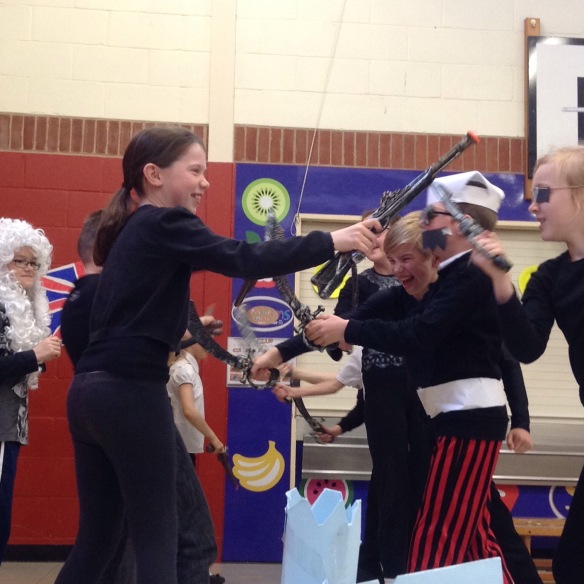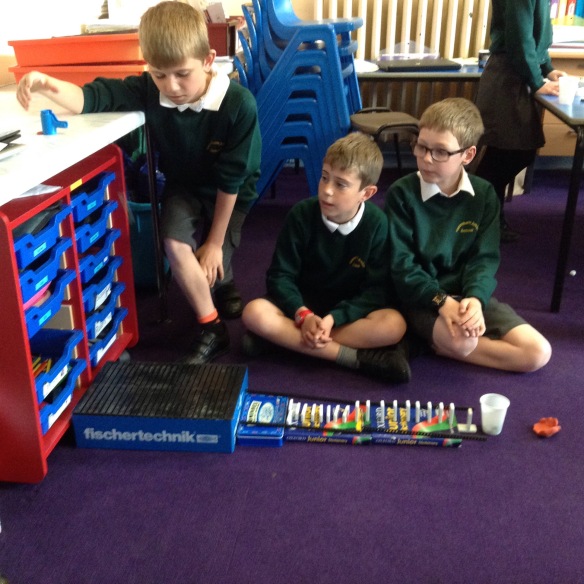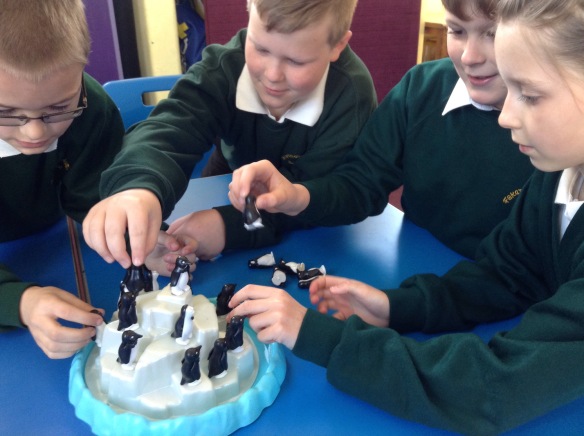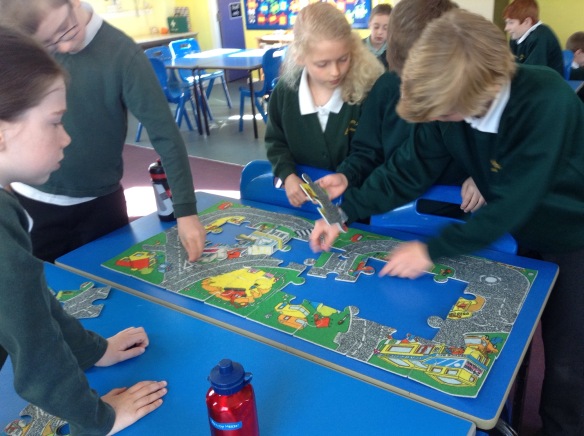Many thanks to all the parents who came along to the Year Four Carol Singalong. It was lovely to perform outside, next time we must all remeber to all sing up loud and clear to bring Christmas cheer.
Author Archives: rwills6
Super Softball

Our softball and team work skills have greatly improved this year. Everyone knows where to be and what to do. Most importantly we work together, giving support and encouragement to other team members. We listen to Mr Futter’s questions and can suggest the best strategy.
Mr Futter said what he was most impressed with was the way he could stand back and let the teams give each other advice, and even if someone does make a wrong decisions nobody criticises because they all realise that they too have made mistakes in the past. “They all have had it happen to them and know how it feels.” Explained Mr Futter.
Bouncing Bounty
Everyone in class has joined in the sponsored bounce. We are grateful to the parents who helped organise this and gave up their morning to count our bounces. We each bounced an average of 70 bounces per minute. That’s a whole lot of bouncing that will raise a bounty for the school. Thank you too to everyone who sponsered our bouncing.
Back in the Pit
A great start to the new term is to go straight into ‘The Pit’. These are activities designed to test us, challenges that look hard (because they are hard) but which we can solve using our KASH skills. Today we especially need to work collaboratively. Each person has a set of clues, there are 28 altogether, by working systematically through the clues. Our real challenge today is to make sure everyone in the group contributes. Some of us like to take over and others are happy to let them take over! Solving a pit problem needs everyone participating. Working well in other lessons needs this skill too. It will not surprise you to learn that the team with everyone on task found the solution the quickest.
Pirate Slam
There be no fiecer crew of pirates than those found in year five today. Just take a look at the landlubbers they captured.

They be a right talented bunch of poets toos. They while away the long nights aboard ship writng pirate poems. I was lucky enough to see a true pirate slam poetry competition this afternoon and there be no better entertainment found in the Seven Seas. See here the piratical poets.
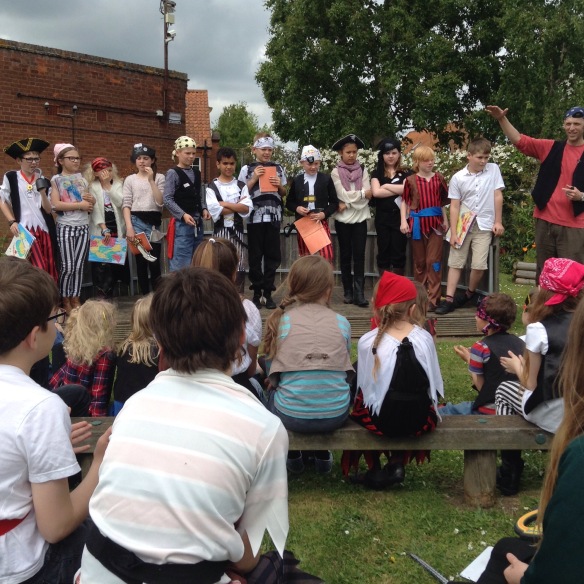
That be the end of our pirate adventures. Next, tales of Olympian feats from Ancient Greece.
Disco Time
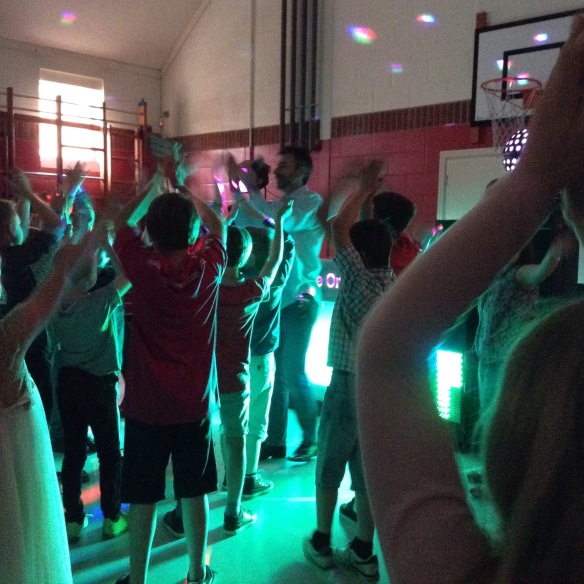
Phase One a Roadshow can come every week for extra physical fitness lessons, aka the school disco. Most parents may be curled up on the sofa in blissful peace and quiet tonight but the wonderful parents of the PTA are here at the Summer Disco ensuring safe, but loud, fun!
If you were here, and loved it, leave a comment.
Play in a Day
The first question everyone asked was ‘How is it possible to put on a play in a day?’ Here is how you do it in four simple steps.
STEP ONE – Make the props. We had the script and notice of props needed from Splat’s Entertainment. 5w had nearly 2 hours to make the props we needed for our scene. We got on quickly and had time to prepare a page about the play for our pirate books.
We only had an hour to learn two scenes. We had to be really quiet and pay attention to the director. Then we needed to remember everything we did. It was hard to remember exactly what to do but luckily some people are really good at listening and we could follow their lead. By lunch we had been through the scenes twice.
All three classes neede to run through their scenes. The audience started to arrive before we even got started! But once we started we could see some great acting. The key is everyone else being still so the actors on the stage can concentrate.
The play, was fantastic. Aaron, from Splat’s Entertainmet, gave us all the cues which helped us remember our parts. Even if we didn’t we found out it didn’t really matter as long as the audience enjoyed our performance. At the start of the day many of us were very nervous ( especially the teachers) but by getting stuck in and doing our very best we found out it is possible to put on a play in only one day.
Simple Machines
Pirates can be marooned or shipwrecked. Left all alone on an island they would need good technical skills to solve problems. Our wanna be pirates learnt about the six simple machines today (I won’t tell you what they are, see how many your pirate can remember).
Here’s a clue, on the day we explored pulleys and levers. Our challenge was to build a fixed single pulley, nearly everyone achieved this. The second challenge was to make a single moveable pulley, that was hard, only one group managed to make this. Next time you are in our hall see if you can spot the mechanism with 5 fixed pulleys. (Clue – look up.)

We also had time to make lots of Knex models that used simple machines, this one took 3 groups to get it made.
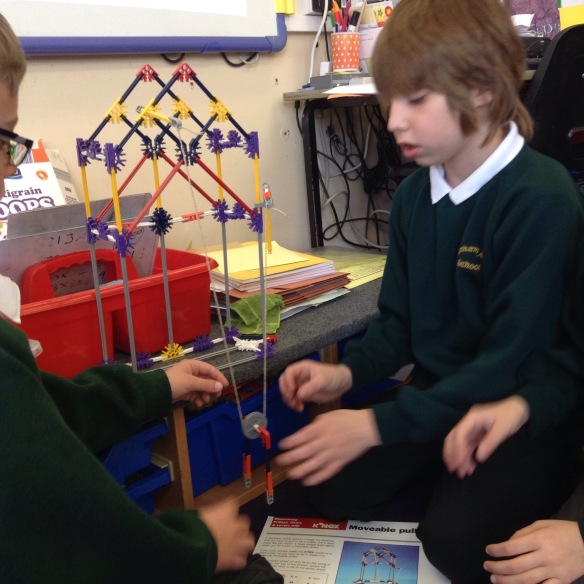
Which simple machine can you see in the picture below?
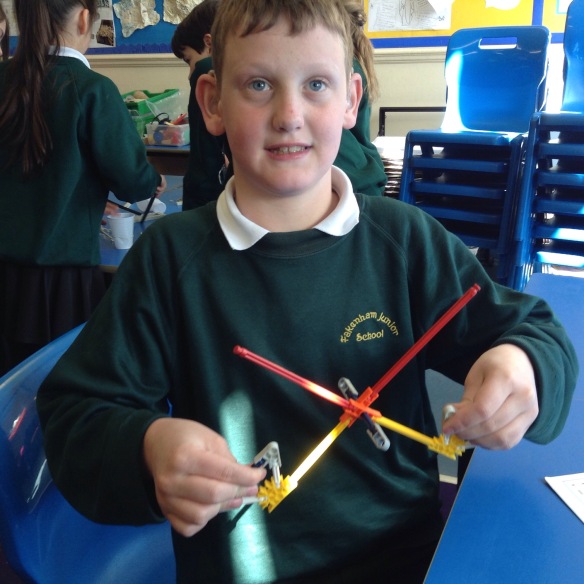
Once we had a good understanding of some of the simple machines we tried the Rube Goldberg Challenge – to make our own machine made up of the six simple machines. Rube Goldbeg was an American cartoonist who was famous for the complex machinery in his cartoons – very like the Mechanical Harry book we had in one of our Curiosity Cafes.
This was my favourite Pirate day so far as I never had the chance to do these hands on activities when I was young and finally realised my dream of building a single fixed pulley!
The Happy Puzzling Company
Louis started the day with the handcuff challenge., this was to prove to us that nothing is impossible if we try, think and try again. The key message is that to succeed we need to be prepared to fail but not give up. Working together we solved the handcuff challenge and we’re ready for one of our own.
The Penguin Challenge
Here are the rules: you mustn’t touch the iceberg with your hands. All penguins must stay on the iceberg. The iceberg must be connected to the wobbly base. We only had 6 minutes the main key to success was team work. It was a harder challenge than it first looked but through perseverance and cooperation we got there in the end.
What can you do to stop the iceberg moving? Was the important question. The team that stopped and asked that question were the first to succeed.
The Road Map Challenge
This challenge had 20 pieces we had to make one continuous road with no entrances, no exits, no dead ends. The best method was to create a rectangle. There are over 70000 solutions and we only have to find one. Should be easy peasy eh! One team solved it in super quick time. They listened and followed the instructions, making a 5 by 4 rectangle and filling in the middle.

The hexagon challenge also needed teamwork. We had to put all the coloured pieces in the hexagon but the same colour must not touch. To start this challenge we started with a pattern on the outside and worked together to build the large hexagon.

By now we were working together really well. We started the next challenge by talking about the best way to start, everyone was listened to. Working together helped us solve this in record time.
Tangrams
We first had to make two squares the same size and then one big square. Perseverance was very important for this challenge, we had to keep trying. It was helpful to listen to other people’s ideas and let them finish trying without taking pieces away. Suggesting different ways to change it and having time to try all ideas got us there in the end.
The pipes needed to join in any shape with no open ends but we only had two end pieces. The challenge here was all agreeing on a shape.
We found that working together and perseverence were the best strategies needed to succeed.
Pirates – may the force be with you.
This week our pirates have been learning all about friction and then applied their learning to the creation and construction of a pirate ship.
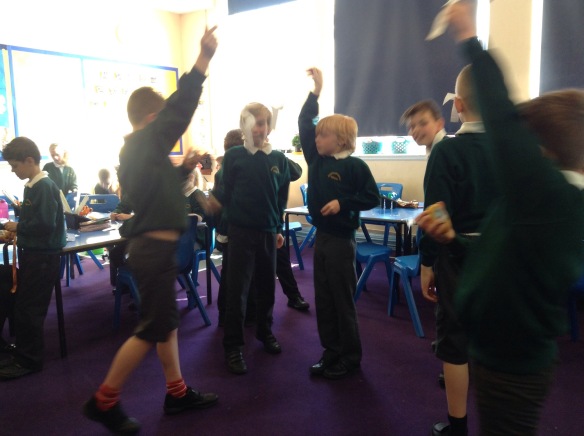 For our first activity we needed to use air resistance and gravity to help the Captain deliver his messages safely. We tested different helicopters to find the one that travelled slowly and fell directly to,the floor. Our outcome surprised us all – the original design proved to be the best as it was not blown to one side by the wind.
For our first activity we needed to use air resistance and gravity to help the Captain deliver his messages safely. We tested different helicopters to find the one that travelled slowly and fell directly to,the floor. Our outcome surprised us all – the original design proved to be the best as it was not blown to one side by the wind.

Our next challenge was to find the best small boat design to carry the most cannon balls (marbles) to the ship. This proved very exciting and once again we were surprised by the result. The boat in the photo had a surface area of 154sm squared as its base and held 60 marbles. That was more than twice the nearest contender. We predicted that the largest area would carry the most cannon balls but this proved not to be the case, other variables were just as important. Can you guess what they were?

No one wanted to slip if they had to walk the plank so we checked to see whose shoes had the best grip. This time our prediction proved correct. The shoes with the deepest tread had the most grip. We used Newton metres to measure the force needed to pull the shoe. How did that tell us which had the greatest grip?

Finally we got to design and make a pirate ship. First we cut wooden dowel to make axels, next we fixed the wheels to the axels. After that we explored ways to make the ship go fast or slow. Finally we created a ship design that was elegant and fearsome.










